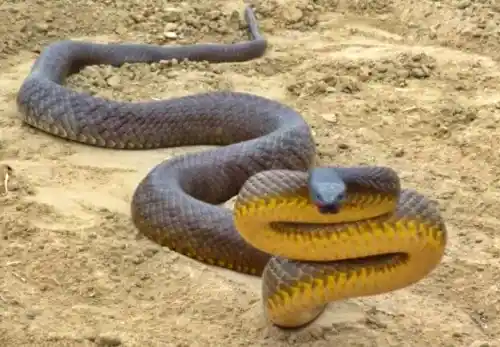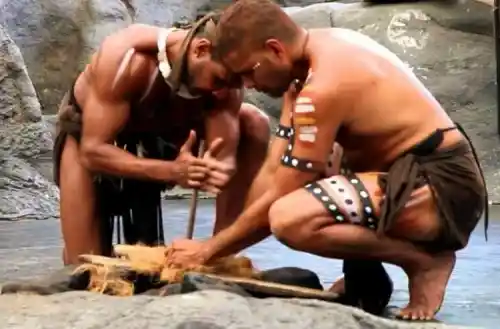Survival Rules. Life is inherently unpredictable, and any individual, no matter how prepared they believe themselves to be, can find themselves facing an extreme situation at a moment’s notice.
Imagine the mundane activity of a hike turning sour: losing the trail while foraging for mushrooms, or simply falling behind a group deep in the backcountry, suddenly alone in the imposing wilderness.
When faced with such a terrifying scenario, what is the immediate, instinctive course of action? Is it to search for moss at the base of trees to pinpoint north and south? Is it to immediately begin a frantic hunt for food to stave off starvation?
Survival Rules and Myths
The truth is that many of the so-called “survival rules” deeply embedded in the public consciousness often derived from television programs, movies, and even outdated educational curricula are, in fact, dangerous myths.
These misconceptions not only fail to aid a person in an emergency but can actively worsen their predicament. Separating fact from fiction is not merely academic; it is potentially lifesaving.
Let us delve into some of the most pervasive survival myths and uncover why blind adherence to them is an exercise in folly.
Myth 1, Sucking Venom from a Snake Bite.
The danger posed by venomous snakes is a grim reality across the globe. According to the World Health Organization (WHO), as many as 5.4 million people are bitten by snakes each year, with up to 138,000 of these cases resulting in death.
For decades, the knee-jerk advice imparted in various media and sometimes in basic safety classes has been to incise the bite wound and suck out the venom.
The theory is that this action can halt the spread of the lethal toxins throughout the victim’s body. This advice is often given with the flimsy caveat that the rescuer must not have any cuts or abrasions in their mouth, lest they become a secondary victim.
The Fatal Flaw.
The medical consensus is unequivocally clear: never attempt to suck venom from a snake bite, regardless of the health of your oral cavity. This method is not only completely ineffective but also actively detrimental.
Scientific evidence has long demonstrated that snake venom spreads through the lymphatic system and the bloodstream with such incredible speed that trying to suction it out minutes after a bite is a futile gesture.
At best, you retrieve negligible amounts of fluid; at worst, you introduce dangerous bacteria from your mouth into the wound, drastically increasing the risk of infection. Furthermore, the practice of applying a tourniquet to the limb to halt venom spread is equally dangerous.
While it may concentrate the venom, preventing its systemic spread, this localized concentration can lead to severe tissue death (necrosis) in the limb, potentially resulting in the loss of that body part altogether.
The Real Course of Action.
The only genuinely correct response to a snakebite is immediate medical attention. Crucially, the victim must remain as calm and still as possible to slow down the circulation of the venom.
They should avoid the consumption of caffeine-containing drinks (including most teas) and, absolutely, alcohol, as these can accelerate heart rate and thus, the venom’s spread.
Keep the bitten area below the level of the heart, if possible, and wait for professional medical help with antivenom.
Myth 2, Playing Dead When Confronted by a Predator.
The wilderness is home to creatures far more imposing than snakes, with wolves, bears, and other large predators presenting a different, more visceral threat. The classic, often-repeated advice when encountering one of these animals is to immediately drop to the ground and “play dead.”
The rationale behind this is the assumption that animals lose interest in objects that are motionless and therefore pose no threat or offer no chase.
The Fatal Flaw.
Reality is far more complex and dangerous. A sudden, unexpected drop to the ground is not interpreted as submission by all animals; in fact, for many predators, it can signal vulnerability, fear, or an unusual behavior that warrants closer inspection.
An animal approaching a suddenly prostrate human may, after an initial cautious sniff, become confused, frightened by a sudden movement or sound, or simply decide to take a preemptive, defensive bite or swipe.
The outcome is unpredictable, and the risk of a severe attack is elevated. The advice to play dead is only conditionally applicable and typically depends on the type of bear and nature of the encounter (e.g., defensive attack by a Grizzly/Brown bear). For an aggressive Black Bear, experts consistently advise fighting back.
The Real Course of Action.
When you spot a large predator, the best strategy is generally to slowly and deliberately back away, without making sudden movements or, critically, turning your back. Speak calmly and firmly to the animal, making your human presence known.
The vast majority of predators are not looking for a fight; they seek to avoid confrontation with humans. Giving the animal space and showing you are leaving the area will often be enough for them to lose interest and allow you to depart unharmed.
Myth 3, Food is the Immediate Priority.
The human drive to eat is powerful, and for many people stranded in the wild, the first instinct is to immediately search for sustenance berries, edible plants, or even attempting to hunt small game.
The Fatal Flaw.
While a sense of security and sustained energy is important, food is not the immediate priority in a survival situation. This is governed by the universally accepted Rule of Threes: a person can survive approximately:
• 3 Minutes without air.
• 3 Hours without shelter in extreme conditions (exposure to elements).
• 3 Days without water.
• 3 Weeks without food.
This hierarchy makes it abundantly clear: the immediate focus must be on shelter (protection from the elements) and, most importantly, water.
The average person can survive a week or even longer without food, but dehydration can set in within a couple of days, rapidly leading to impaired judgment, loss of mobility, and death.
The Real Course of Action.
Prioritise finding and purifying a water source. Simply locating water is insufficient. It must be checked for major contamination (avoiding water near human settlements or chemical runoff) and, critically, purified.
First, filter out large debris using layers of cloth or a natural sieve. Second, and most important, the water must be boiled vigorously for several minutes to kill pathogenic bacteria, viruses, and parasites.
Ingesting contaminated water will lead to vomiting and diarrhoea, which accelerates dehydration the very thing you are trying to prevent. Only after shelter and water are secured should the search for food begin.
Myth 4, Moss Always Grows on the North Side of Trees.
From childhood lessons, many people hold the belief that moss predominantly grows on the northern, shadier side of a tree trunk, offering a simple, natural compass for a lost individual.
The Fatal Flaw.
This is perhaps one of the most widely taught and utterly unreliable survival myths. In reality, moss grows wherever conditions are favourable for it to thrive: this means damp, shady areas. Depending on the local topography, canopy density, prevailing winds, and proximity to a water source, moss can and often does grow on all sides of a tree.
Walking through any well-established park or forest will quickly confirm this, as a compass check will show moss patches thriving equally well on the south, east, and west-facing sides, especially in humid climates. Relying on this myth has undoubtedly led thousands of lost individuals further astray.
The Real Course of Action.
In a survival situation, reliable navigation is key.
• By Day (Clear Sky): Use the Sun. In the Northern Hemisphere, the Sun is generally in the East around 7 AM, due South around 1 PM (Solar Noon, not always 1 PM clock time due to time zones), and in the West around 7 PM. This provides a very rough, yet infinitely more accurate, guide than moss.
• By Night (Clear Sky): Use the stars. Locate the Big Dipper (Ursa Major). Mentally connect the two stars at the outer edge of its ‘bowl’ and extend this line northward until you reach the next bright star, which is the North Star (Polaris). The North Star is fixed, pointing due North, making it a reliable navigational tool.
Myth 5. Friction Fire is Easy to Start.
Survival shows often feature an intrepid host effortlessly conjuring fire by rubbing two sticks together over a pile of tinder, making the process look achievable with minimal effort.
The Fatal Flaw.
In real-world conditions, particularly in a temperate or humid environment, successfully starting a friction fire is an extremely challenging feat requiring significant skill, endurance, and, most crucially, perfectly dry materials.
Most materials found in the wild twigs, leaves, moss retain a surprising amount of moisture, making them nearly impossible to ignite through friction. On television, the process often works only because the hosts are using meticulously pre-prepared, kiln-dried components and are proficient experts.
An inexperienced, freezing, and exhausted individual will expend precious energy attempting this trick, likely failing, and losing valuable time and resources.
The Real Course of Action.
The priority is to carry reliable fire-starting equipment as a core part of any outdoor kit. This includes a dependable lighter, waterproof matches, and a ferrocerium rod (ferro rod).
If forced to improvise, focus on finding the driest, most flammable material possible for tinder (like birch bark, fine wood shavings from the inside of a dead log, or even lint from your pockets) and use a tool-based method like a lighter or ferro rod, saving the high-effort friction method as an absolute last resort.
These guidelines are not meant to instil fear, but to empower the traveller with knowledge, transforming paralyzing fear into a proactive, rehearsed plan of action, should the unthinkable ever occur. In both the wilderness and the air, knowledge is the ultimate survival tool.
Would you like to explore other common survival myths, such as plane
Have a Great Day!





